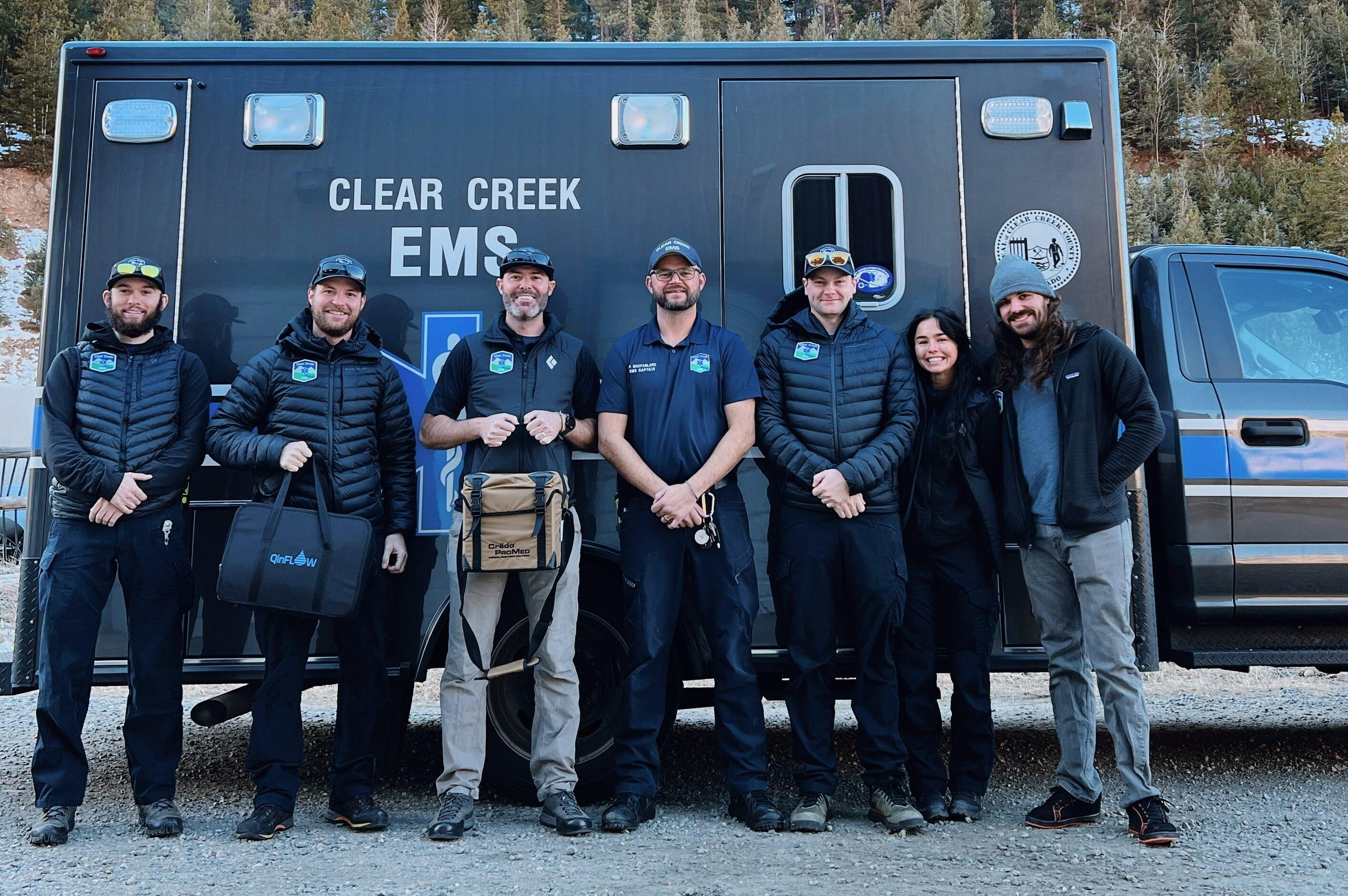Updated at 4:55 p.m. ET
Hurricane Florence, a Category 4 storm, "is expected to be an extremely dangerous major hurricane through landfall" on Thursday or Friday and has triggered a hurricane watch for all of North Carolina and part of South Carolina, according to the National Hurricane Center.
"Let me tell you, this one really scares me," National Hurricane Center Director Ken Graham said. Citing his 24 years in the National Weather Service, Graham added, "It's one of those situations, you're going to get heavy rain, catastrophic life-threatening storm surge ... and also the wind. Now's the time to prepare."
Florence is packing maximum sustained winds of 130 mph, with gusts up to 160 mph — and it's getting both larger and better-organized, the hurricane center said in its 2 p.m. ET update. Its hurricane-force winds extend up to 60 miles from the storm's center.
At 2 p.m., Florence was 845 miles east-southeast of Cape Fear, N.C., moving west-northwest at 17 mph.
Florence is expected to hit the Carolinas and Virginia late Thursday or early Friday, prompting evacuation orders for more than a million people. It's currently predicted to make landfall somewhere north of Wilmington, N.C., before its center heads inland toward the cities of Raleigh and Durham.
The large and powerful hurricane prompted evacuation orders in North and South Carolina and Virginia — all of which have already declared states of emergency. Officials are urging residents in coastal and low-lying areas to prepare for strong winds, a deep storm surge and a very prolonged deluge of rainfall.
"People need to leave now before they can't," North Carolina Gov. Roy Cooper said. "People are doing a pretty good job currently. We want to make sure people understand that people should not ride Hurricane Florence out."
President Trump met with federal disaster officials at the White House on Tuesday. "We've never seen anything quite like this, on the East Coast at least," he said, according to Reuters. "I would say everybody should get out. ... It's going to be really, really bad along the coast."
He said Congress would be generous with disaster relief funding. "Any amounts of money, whatever it takes, we're going to do it."
The storm will pick up additional strength as it passes over ocean water with sea surface temperatures of up to 85 degrees, the National Hurricane Center said. It will possibly weaken somewhat as it nears land — but that will hardly change the flooding threat.
The National Hurricane Center said:
"Life-threatening, catastrophic flash flooding and significant river flooding is possible over portions of the Carolinas and Mid-Atlantic states from late this week into early next week, as Florence is expected to slow down as it approaches the coast and moves inland."
Even before it officially arrives, Florence will push tall waves far ahead of it.
"We're talking 12-foot seas stretching 300 miles away from the center," the NHC's Graham said. The large storm is also projecting tropical storm-force winds outward up to 170 miles. When it reaches inland ares, far from the coast, its high winds and heavy rains will knock down trees and wreak other havoc, according to the hurricane center.
"All the rainfall we're going to have, plus you talk about the wind — that means a lot of trees coming down, it's a lot of power outages, a lot of impacts with this system," Graham said.
As of Tuesday morning, a hurricane watch was in effect for hundreds of miles of the U.S. East Coast, from Edisto Beach in South Carolina up north to the North Carolina-Virginia border. Tropical storm conditions could hit those areas by early Thursday, forecasters say.
The hurricane watch notice is significant because it signals the opening of a 48-hour window for the expected first arrival of tropical storm-force winds. After that point, it would be difficult for people in the storm's path to either finish preparations or flee affected areas.
On Tuesday morning, data from an Air Force Reserve hurricane hunter aircraft showed that Florence's sustained winds had weakened somewhat from the 140 mph speeds reported earlier. But the storm is expected to strengthen again over the next day or so.
If it makes landfall as predicted, Florence could become the northernmost Category 4 hurricane to hit the U.S. since records were first kept in 1851. It's expected to strike far north of where Hurricane Hazel arrived, close to the South Carolina/North Carolina border, in October 1954.
In addition to strong winds, Florence brings the threat of a devastating storm surge — as high as 6 to 12 feet in the area from Cape Fear, N.C., to Cape Lookout, N.C.
In an update on Tuesday afternoon, the National Weather Service in Charleston predicted a life-threatening storm surge of at least 3 feet, with a dire worst-case scenario.
"Significantly higher values of inundation — that's water above the ground — could easily be 20-plus feet, if we're facing a landfall of a major hurricane," meteorologist Bob Bright said.
"That doesn't even take into account large battering waves on top of that," he added.
"Prolonged and exceptionally heavy" rains will also inundate parts of the coast and inland areas, the National Hurricane Center said. "Florence is expected to produce total rainfall accumulations of 15 to 20 inches with isolated maxima to 30 inches near Florence's track over portions of North Carolina, Virginia and northern South Carolina through Saturday. This rainfall may produce life-threatening flash flooding."
The storm is expected to stall over North Carolina, slowly making its way across the state and into southwestern Virginia over the weekend. The hurricane center predicts a "heavy rainfall event, which may extend inland over the Carolinas and Mid-Atlantic for hundreds of miles."
Overnight, Florence went through an "eyewall replacement cycle," Senior Hurricane Specialist Stacy Stewart said in an update from the hurricane center on Tuesday.
"That's good news and bad news," he said. "It's weakened, but unfortunately, the eye has expanded out to a diameter now of about 30-35 nautical miles."
Stewart added, "We're going to have a fairly stable, powerful hurricane with the potential for some additional slow strengthening over about the next 24 hours."
According to the Saffir-Simpson Hurricane Wind Scale, people caught in a Category 4 storm can expect to see "catastrophic damage." From the official guideline:
"Well-built framed homes can sustain severe damage with loss of most of the roof structure and/or some exterior walls. Most trees will be snapped or uprooted and power poles downed. Fallen trees and power poles will isolate residential areas. Power outages will last weeks to possibly months. Most of the area will be uninhabitable for weeks or months."
A Category 4 storm has sustained winds from 130 to 156 mph. If Florence weakens enough to arrive as a Category 3 storm, it would likely be near the upper limit of that classification. At that level, it would still cause "devastating damage," according to the Saffir-Simpson scale.
But while wind speed offers an easily quantifiable way to rate dangerous storms, forecasters are warning people not to fixate on that, saying that saltwater from the storm surge and freshwater from heavy rains pose a serious threat, no matter what the top winds are when the hurricane makes landfall.
In addition to Florence, the Atlantic Ocean currently has two other strong storms. Tropical Storm Isaac is heading westward toward the central Lesser Antilles, triggering a hurricane watch for Guadeloupe, Martinique and Dominica.
Farther to the east, Hurricane Helene is currently a Category 2 storm, but it's expected to curve harmlessly northward and weaken in the central Atlantic.
9(MDEyMDcxNjYwMDEzNzc2MTQzNDNiY2I3ZA004))








